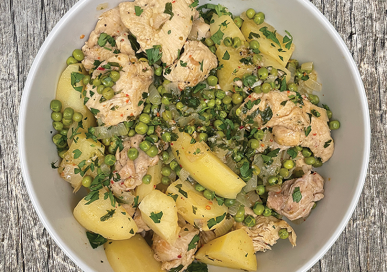Opening a box of pasta and adding it into boiling water is really easy, so why go to all the trouble of actually making fresh pasta? Flavour! Give it a try!
Fresh Pasta

Have a look below at the full recipe. Don’t forget, you can always print it.
Alternatively, you can surf in my Facebook & Instagram pages to explore more mouthwatering recipes.
Storing and drying instructions are from an article ‘How to Store Fresh Pasta’ By Victoria Bailey.
Fresh Pasta
Ingredients
- 150g ‘OO’ Flour
- 50g Semolina flour , durum
- Or
- 200g ‘00’ Flour , or All-purpose flour
- 2 whole large Eggs
- 1-2 tbsp cold Water
- 1 tbsp olive oil
- ½ tsp Sea Salt
Instructions
- Mix the dough either in a bowl or on a cutting board. Add the flour/s and the salt and mix well. Make a well in the centre and add the eggs. Use a fork to break the eggs and slowly draw the flour into the eggs.
- Add the oil and work with your fingers and palm until it forms a rough ball that basically cleans the side of the bowl. If the dough won’t come together and looks like tiny bits, add water 1 tsp at a time. If the dough is too sticky, do the same with flour.
- The dough is formed, after about 3-5’ of kneading where the dough is smooth and firm but not hard in which case either add some flour or water. Sprinkle a little bit of flour on the dough ball, put it in a bowl, and cover it with plastic wrap. Let it sit in a cool place for 30’. You can even refrigerate overnight.
- The above can also be done in a food processor with the metal blade attached where you add the flours and the salt, pulse few times and then add the eggs, oil and water and process for about 30’’ until a ball of dough is formed. As above, brush the dough with some oil and allow to rest in a cool place or in the refrigerator for 30’.
- To cut your pasta either manually or with a pasta making machine, you flour your surface and roll out the dough to just under a cm thickness.
- For manually cutting the pasta, cut the dough into four, working on one piece at a time, keeping covered with plastic wrap the other pieces so that they don’t dry out. Lightly flour and flat each piece and roll the pasta out into a rectangle into strands for tagliatelle with a rolling tool or fold 4 times the pasta and cut with a knife.
- For making the pasta with a machine, cut the dough into 6 pieces and gently flatten on a lightly flour surface into about ½ disc. Pass the first dough through the largest opening of the machine and fold into 3 the rolled dough. This is done to square as much as possible the pasta dough. Repeat 3-4 times while lightly flouring every now and then the rolled sheet before folding it.
- Then reduce the opening of the machine and pass once. Reduce again the opening and pass the rolled dough while adding flour if needed. During this process you don’t fold the rolled pasta dough. Keep reducing the opening to your desired thickness, for my taste I find the for tagliatelle 3 positions before the end is the best.
- When this process is completed, the next step is cutting the pasta. With a knife cut dough sheet to a desired length and wrap remainder of sheet in a towel to prevent it from drying out. Or place the attachment that cuts the pasta and insert the pasta dough sheet into the cutting rollers for the type of pasta being prepared. Turn the handle slowly and hold the edge of the pasta so that it falls easily between cutting rollers of machine.
- Whether you’re going to use the pasta right away or keep it for later, you need to dry it to a greater or lesser extent. Toss the strands with a little bit of flour to keep them from sticking together; then hang them on a pasta rack or spread them in a single layer on baking sheets. If you plan to use the pasta that same day, dry the noodles for about 30 minutes. This allows the flour to absorb more of the moisture from the eggs.
- To cook, in a large saucepan with lots of water, bring it to the boil and add some salt and then add the pasta and cook for about 3-4’or until al dente.
- Drying Pasta. To make dried pasta for storage takes a bit longer than those you plan to eat right away; therefore, they should be treated differently. If you want to keep your pasta for days or even weeks, you’ll need to dry it completely. This generally takes 12–24 hours, although you can speed up the process by aiming a fan toward the noodles to create a gentle breeze.
- Check the noodles every couple of hours to see when they’re ready for storage. The noodle should snap in half when twisted, with no bend or give. Once the pasta is completely dry, pack it in zip-top bags, glass jars or other airtight containers and store it at room temperature.
- Storing Homemade Pasta in the Refrigerator. If pasta’s not on the menu tonight or if you’ve made an extra-big batch, you can store your fresh noodles in the refrigerator for up to two days. After dusting them with flour, let them dry for just a few minutes on a baking sheet or another flat surface. Once the noodles are dry to the touch, loosely fold them or create nests with them and let them dry for another half-hour. Wrap the dried pasta or put it in an airtight container to keep it from drying out and cracking and place it in the refrigerator for a day or two.
- Freezing Fresh Pasta Dough. If you’ve got the urge to make fresh pasta but no plans to eat it soon, freeze your noodles or even the dough ball and save it all for later. If you want to premake the pasta dough and not cut or roll it, simply wrap it in a double layer of heavy-duty plastic wrap and put it in the freezer for up to four weeks. When you’re ready to make fresh pasta, thaw the dough in the refrigerator overnight; then cut and cook the noodles. For cut pasta in the freezer toss the strands in flour to coat; then shake them to remove any excess flour. Lay the noodles out on a baking sheet and place both noodles and baking sheet in the freezer until the noodles are frozen solid. Freezing them this way prevents their sticking together in the freezer. Remove the pan and package the frozen noodles in individual servings in freezer bags.
- CLEANING AND CARE OF MACHINE. After preparing the pasta, clean the machine with a dry cloth and a brush. Never wash the machine with water or in the dishwasher. Do not insert knives between the rollers.




